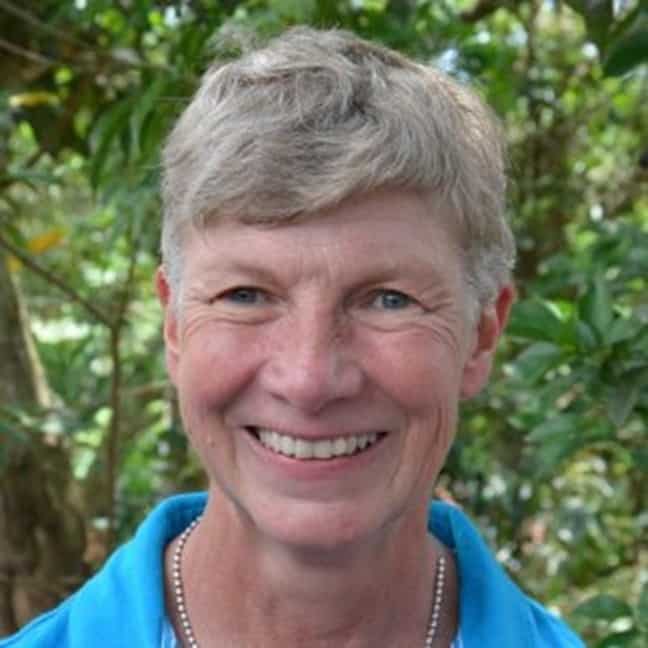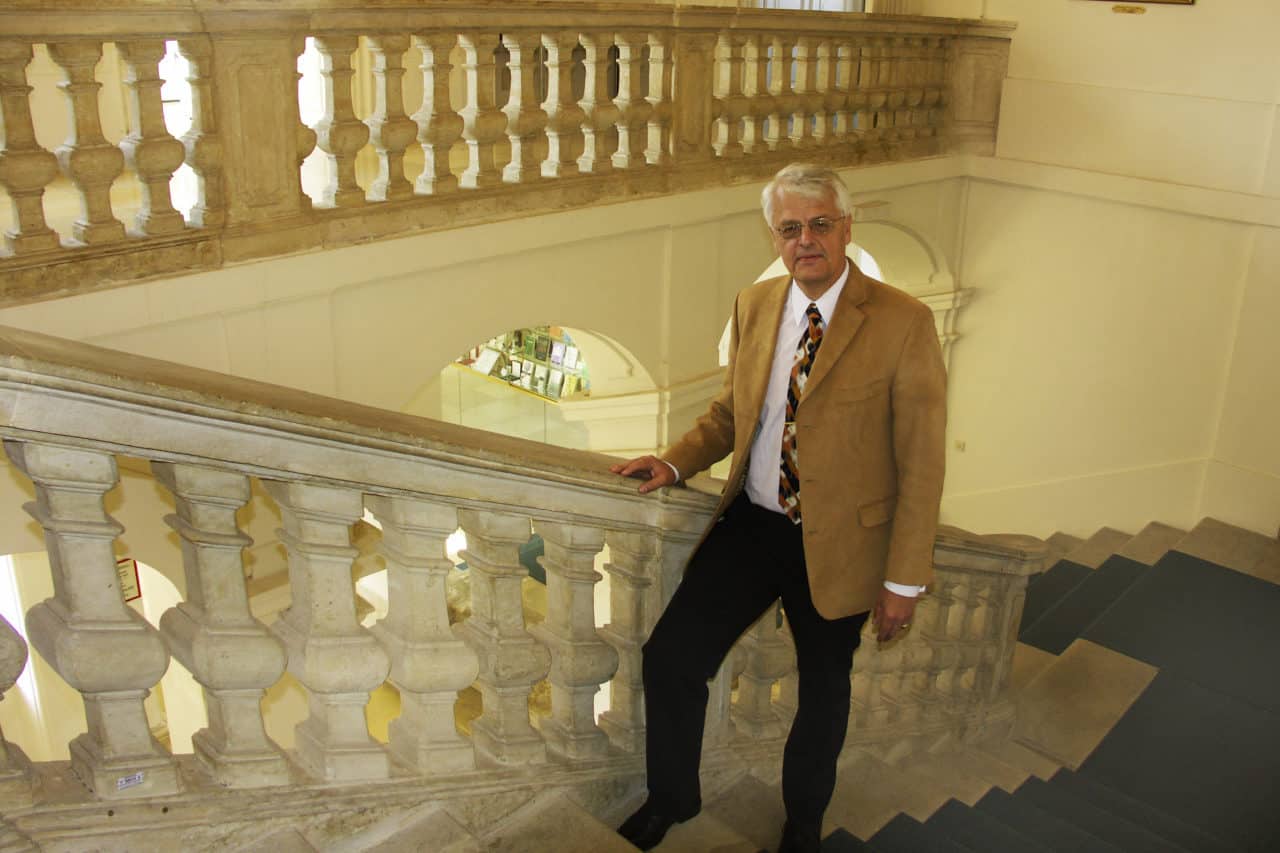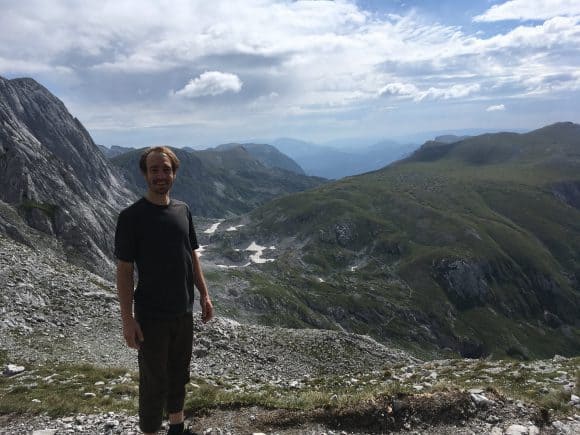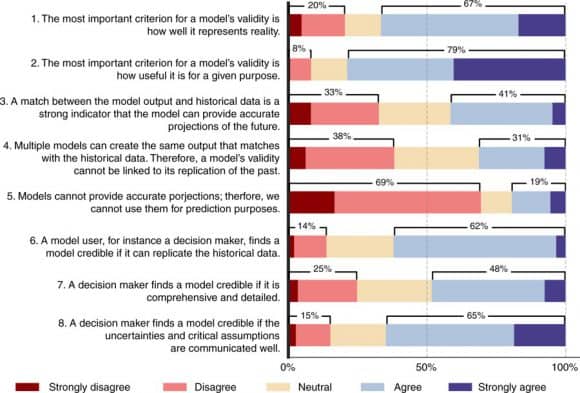Nov 18, 2019 | IIASA Network, South Africa, Women in Science
Mary Scholes has been serving on the IIASA Science Advisory Committee (SAC) since 2011 and was appointed as Chair in 2014. She discusses her views of SAC in this interview with Monika Bauer, IIASA Network and Alumni Officer.

Mary Scholes
Tell us about your journey as a member of SAC.
It’s been a very interesting journey for me. When I was first asked to join SAC, I declined. Over time, I found that the institute changed to look at the quality of the research in the programs, and it was at this point that I said I would become part of the committee. I soon realized that I didn’t really understand the overarching top down role that IIASA Council played.
It was very interesting. The first two to three years was a learning curve working on communicating with the IIASA Council. The institute was conducting good science, and we didn’t want that to be overlooked in any way. We re-wrote the terms of reference for SAC, focusing on the engagement between what SAC does during the year and how that is communicated to Council. From that point on, it was always on the agenda, documents were always acknowledged, and there was always follow up. It my opinion, it changed how SAC functioned.
In 2017, the institute started an institutional review process, and I represented SAC on the taskforce that was assembled to support this effort. Throughout the process, in my opinion, it came out quite clearly, that SAC needs to play a much more engaged role with the Council Program Committee, and that the Program Committee should ensure that SAC’s voice reaches the Council. In the past, there was a quite strong responsibility on the SAC Chair, to make sure the voice of the committee was heard, and this process resolved this.
What will happen next, I think, is that SAC will interact much more closely with the new Deputy Director General for Science (DDGS), who will then take the views or recommendations of SAC to Council. It would be advantageous to still have the SAC Chair invited to IIASA Council meetings to ensure information is conveyed or to answer any follow up questions. I would also suggest that SAC continues in the role of an advisory board to IIASA. I believe any good international science institution, anywhere in the world, should have an external, neutral, excellent research advisory body.
How do you see SAC developing as you step down at the end of this year?
First, that SAC continues. Second, that the Chairperson interacts frequently with the new DDGS. Third, that the DDGS communicates SAC’s feedback to Council, and to ensure that this is the voice of SAC, the Chairperson should be invited to that particular section of the Council meetings. For this, the terms of reference would however need to be revisited.
How is this different from the current situation?
At the moment, SAC is meant to only look backwards. I plan to challenge this, so that it can be raised in 2020 because, in my opinion, this is the best committee to do an independent horizon scanning exercise. Internal researchers can do a horizon scanning exercise from their perspective, and SAC add expertise from other areas and regions. Therefore, I believe SAC needs to be given the space of being retrospective as well as the space to look forward and to take those ideas to the DDG of Science.
Those are the three critical roles I think that SAC needs to take in the future. If this is done, it would greatly benefit the scientific governance of the institute.
SAC members can serve a maximum of six years. This is a good decision. A new Chairperson will be a new beginning, with these principle guidelines providing a foundation.
What do you feel are the main takeaways from SAC’s recent report to the IIASA Council?
First, SAC is very pleased about the new DDGS position, as we feel it’s important to have someone who can solely focus on driving the science agenda rather than also running the entire institution.
Second, it’s important for the strategic plan to be agile. I think the way the new strategic plan needs to be developed is probably in phases. For example, instead of designing a ten-year plan, do a three-year portion and then a five-year portion; there could also be staggered overlaps. This way the institute is much more agile while focusing on the results rather than where to allocate the budget, and it allows flexibility for the institution to change as research progresses or is completed. SAC would like to see an agile research strategy that also takes into account the fundamentals of knowledge versus what can be done with iterative machine learning.
Lastly, there was concern about the processes regarding recent changes at the institute. This is a hard issue to handle, and there are ways of potentially managing it better.
What has left the greatest impression on you during your time on SAC?
I think it’s critical how IIASA moves forward with its National Member Organizations (NMOs), how governments stay engaged, and how these relationships work in terms of a reciprocal relationship.
My experiences in South Africa have been closely tied to the Southern African Systems Analysis Centre (SASAC), an initiative organized by IIASA and the South African NMO. At the moment the program is stagnant, and we’re hoping the materials we produced for SASAC will find a new avenue for teaching a new cohort as there are absolutely wonderful examples of success stories.
After completing the three-week SASAC High-level Capacity Strengthening Program, participants would update their CVs and quickly be promoted to higher positions at various universities and institutions. Individuals from other African countries would come to South Africa because there were no opportunities in their home countries, complete the program, and then be promoted into positions at universities back home. Another example from the last course in 2017: I had 16 participants and already 13 manuscripts have been published. That’s a huge return on investment. The program really worked, and we would obviously like to see the program continue. Perhaps the gentlest way would be to have a committed postdoc come to IIASA and then go back to South Africa and drive a new program.
Mary Scholes will be stepping down as SAC Chair in December 2019 and will continue serving on the South African NMO Committee for IIASA.
Notes:
More updates from IIASA alumni or information on the IIASA network may be found here.
This article gives the views of the author, and not the position of the Nexus blog, nor of the International Institute for Applied Systems Analysis.
Oct 21, 2019 | Alumni, IIASA Network, Netherlands, Systems Analysis
Leen Hordijk has served in the capacity of project leader, Council member, and director of IIASA. He is currently professor emeritus at Wageningen University and special adviser to the Competence Centre on Modeling at the European Commission’s Joint Research Centre (JRC). He was recently interviewed by IIASA Network and Alumni officer, Monika Bauer.

Leen Hordijk at IIASA in 2006.
In 2007, you wrote an Options article on what systems analysis is in which you stated that systems analysis at IIASA is making an important—even essential—contribution to solving some of the world’s most complex problems. Is the role of systems analysis even more important today, and if so why?
In today’s world, it is indeed more important. First and foremost, the world is more complex than it was 20 years ago. Internet, social media, and the accessibility of transport options make the world more connected and thus more complex. Systems analysis can assist in disentangling the complexities and in trying to quantify where possible. Science is frequently under attack by interest groups, climate change deniers, and even some governments. It is therefore even more important to have an international, multidisciplinary, and multi-cultural institute like IIASA to bring scientific results to policymakers and society. Impartiality and knowledgeability are in the institute’s genes. The world notices this in scientific contributions by IIASA to policy debates in energy, biodiversity, climate change, disaster management, air quality, aging population issues, water management, and technology development.
In my personal development, IIASA has played a key role since my first visit in 1979 when I attended a regional economics conference. “IIASA gets into your blood”, as one of our sons said when I was thinking about applying for the IIASA directorship back in 2001. That is so true for many alumni.
What are your reflections on your time as IIASA Director General?
When I arrived as director in 2002, the challenge was twofold. First, I had to deal with financial issues, as two major members of IIASA had not lived up to their commitments, while expenditures had not been reduced. Second, some ten years after the end of the Cold War, the IIASA membership structure had not changed. The first problem was solved through a thorough 25% expenditure reduction plan and a re-engagement of said members. IIASA staff realized that cuts were necessary, and they were very engaged in finding solutions. The re-engagement of member countries went quickly because of the involvement of Austrian government officials, in particular Raoul Kneucker. The second issue took more time: expanding membership for IIASA to become a global institute rather than an East-West one. With China already on board when I arrived, we expanded membership with Egypt, India, Pakistan, South Africa, and the Republic of Korea.
In terms of content and scientific quality, I was very happy to find an excellent staff. What surprised me was that the number of social scientists (including economists) was higher than I had expected, and the total sum of external financing was quite low. In the following years, most programs became very successful at acquiring projects funded by the European Research Council and various Directorates-General of the European Commission.
Today, IIASA is a major player in terms of providing impartial scientific input in the analysis of many global challenges, such as energy, air quality and climate change, sustainable development, disaster risks, ecosystem services, demography, and technological transitions. IIASA is often a leading institute in signaling global trends and changes and, very importantly, uses its broad systems analytic and modeling capacity to quantify such changes and bring the results to policy fora.
In your opinion, how has the Dutch community benefited from the IIASA network?
It is always very hard to point at such benefits, because more often than not, they cannot be linked to single causes. That aside, I think that the Netherlands’ strength in systems analysis for environment, climate, and energy can, for a substantial part, be linked to leading scientists who spent time at IIASA and/or are active participants in IIASA networks. Last year I came across a nice example when I had a temporary assignment as chief scientist at PBL, the Netherlands Environmental Assessment Agency. In that year, PBL was heavily involved in analyzing a draft national climate agreement for the Dutch government. I met two key scientists in that team who I knew as Young Scientists Summer Program (YSSP) participants during my time as director of IIASA. It was very exciting to notice how they had grown since their time as YSSPers and became essential in the PBL team.
Being part of global scientific networks, gaining experience in advanced interdisciplinary work, and, last but not least, the YSSP, are specific benefits all member countries receive from being a part of IIASA. IIASA was not founded for the benefit of single countries – it is the global good that the institute tries to understand and serve.
I have also personally benefited from being a part of the IIASA network. When I left IIASA in May 2008, I became director of the Institute for Environment and Sustainability of the JRC in Ispra, Italy. IIASA and the JRC have become close collaborators in various fields of research.
More updates from IIASA alumni or information on the IIASA network may be found here.
Note: This article gives the views of the author, and not the position of the Nexus blog, nor of the International Institute for Applied Systems Analysis.
May 29, 2019 | Science and Policy, Vietnam
Tran Thi Vo-Quyen, IIASA guest research scholar from the Vietnam Academy of Science and Technology (VAST), talks to Professor Dr. Ninh Khac Ban, Director General of the International Cooperation Department at VAST and IIASA council member for Vietnam, about achievements and challenges that Vietnam has faced in the last 5 years, and how IIASA research will help Vietnam and VAST in the future.

Professor Dr. Ninh Khac Ban, Director General of the International Cooperation Department at VAST and IIASA council member for Vietnam
What have been the highlights of Vietnam-IIASA membership until now?
In 2017, IIASA and VAST researchers started working on a joint project to support air pollution management in the Hanoi region which ultimately led to the successful development of the IIASA Greenhouse Gas – Air Pollution Interactions and Synergies (GAINS) model for the Hanoi region. The success of the project will contribute to a system for forecasting the changing trend of air pollution and will help local policy makers develop cost effective policy and management plans for improving air quality, in particular, in Hanoi and more widely in Vietnam.
IIASA capacity building programs have also been successful for Vietnam, with a participant of the 2017 Young Scientists Summer Program (YSSP) becoming a key coordinator of the GAINS project. VAST has also benefited from two members of its International Cooperation Department visiting the IIASA External Relations Department for a period of 3 months in 2018 and 2019, to learn about how IIASA deals with its National Member Organizations (NMOs) and to assist IIASA in developing its activities with Vietnam.
What do you think will be the key scientific challenges to face Vietnam in the next few years? And how do you envision IIASA helping Vietnam to tackle these?
In the global context Vietnam is facing many challenges relating to climate change, energy issues and environmental pollution, which will continue in the coming years. IIASA can help key members of Vietnam’s scientific community to build specific scenarios, access in-depth knowledge and obtain global data that will help them advise Vietnamese government officials on how best they can overcome the negative impact of these issues.
As Director General of the International Cooperation Department, can you explain your role in VAST and as representative to IIASA in a little more detail?
In leading the International Cooperation Department at VAST, I coordinate all collaborative science and technology activities between VAST and more than 50 international partner institutions that collaborate with VAST.
As the IIASA council representative for Vietnam, I participate in the biannual meeting for the IIASA council, I was also a member of the recent task force developed to implement the recommendations of a recent independent review of the institute. I was involved in consulting on the future strategies, organizational structure, NMO value proposition and need to improve the management system of IIASA.
In Vietnam, I advised on the establishment of a Vietnam network for joining IIASA and I implement IIASA-Vietnam activities, coordinating with other IIASA NMOs to ensure Vietnam is well represented in their countries.
You mentioned the development of the Vietnam-IIASA GAINS Model. Can you explain why this was so important to Vietnam and how it is helping to improve air quality and shape Vietnamese policy around air pollution?
Air pollution levels in Vietnam in the last years has had an adverse effect on public health and has caused significant environmental degradation, including greenhouse gas (GHG) emissions, undermining the potential for sustainable socioeconomic development of the country and impacting the poor. It was important for Vietnam to use IIASA researchers’ expertise and models to help them improve the current situation, and to help Vietnam in developing the scientific infrastructure for a long-lasting science-policy interface for air quality management.
The project is helping Vietnamese researchers in a number of ways, including helping us to develop a multi-disciplinary research community in Vietnam on integrated air quality management, and in providing local decision makers with the capacity to develop cost-effective management plans for the Hanoi metropolitan area and surrounding regions and, in the longer-term, the whole of Vietnam.
About VAST and Ninh Khac Ban
VAST was established in 1975 by the Vietnamese government to carry out basic research in natural sciences and to provide objective grounds for science and technology management, for shaping policies, strategies and plans for socio-economic development in Vietnam. Ninh Khac Ban obtained his PhD in Biology from VAST’s Institute of Ecology and Biological Resources in 2001. He has managed several large research projects as a principal advisor, including several multinational joint research projects. His successful academic career has led to the publication of more than 34 international articles with a high ranking, and more than 60 national articles, and 2 registered patents. He has supervised 5 master’s and 9 PhD level students successfully to graduation and has contributed to pedagogical texts for postgraduate training in his field of expertise.
Notes:
More information on IIASA and Vietnam collaborations. This article gives the views of the authors, and not the position of the Nexus blog, nor of the International Institute for Applied Systems Analysis.
Mar 29, 2019 | USA, Young Scientists
By Matt Cooper, PhD student at the Department of Geographical Sciences, University of Maryland, and 2018 winner of the IIASA Peccei Award
I never pictured myself working in Europe. I have always been an eager traveler, and I spent many years living, working and doing fieldwork in Africa and Asia before starting my PhD. I was interested in topics like international development, environmental conservation, public health, and smallholder agriculture. These interests led me to my MA research in Mali, working for an NGO in Nairobi, and to helping found a National Park in the Philippines. But Europe seemed like a remote possibility. That was at least until fall 2017, when I was looking for opportunities to get abroad and gain some research experience for the following summer. I was worried that I wouldn’t find many opportunities, because my PhD research was different from what I had previously done. Rather than interviewing farmers or measuring trees in the field myself, I was running global models using data from satellites and other projects. Since most funding for PhD students is for fieldwork, I wasn’t sure what kind of opportunities I would find. However, luckily, I heard about an interesting opportunity called the Young Scientists Summer Program (YSSP) at IIASA, and I decided to apply.
Participating in the YSSP turned out to be a great experience, both personally and professionally. Vienna is a wonderful city to live in, and I quickly made friends with my fellow YSSPers. Every weekend was filled with trips to the Alps or to nearby countries, and IIASA offers all sorts of activities during the week, from cultural festivals to triathlons. I also received very helpful advice and research instruction from my supervisors at IIASA, who brought a wealth of experience to my research topic. It felt very much as if I had found my kind of people among the international PhD students and academics at IIASA. Freed from the distractions of teaching, I was also able to focus 100% on my research and I conducted the largest-ever analysis of drought and child malnutrition.

© Matt Cooper
Now, I am very grateful to have another summer at IIASA coming up, thanks to the Peccei Award. I will again focus on the impact climate shocks like drought have on child health. however, I will build on last year’s research by looking at future scenarios of climate change and economic development. Will greater prosperity offset the impacts of severe droughts and flooding on children in developing countries? Or does climate change pose a hazard that will offset the global health gains of the past few decades? These are the questions that I hope to answer during the coming summer, where my research will benefit from many of the future scenarios already developed at IIASA.
I can’t think of a better research institute to conduct this kind of systemic, global research than IIASA, and I can’t picture a more enjoyable place to live for a summer than Vienna.
Note: This article gives the views of the author, and not the position of the Nexus blog, nor of the International Institute for Applied Systems Analysis.
Jan 24, 2019 | Data and Methods, Systems Analysis, Women in Science
By Sibel Eker, IIASA postdoctoral research scholar

Ceci n’est pas une pipe – This is not a pipe © Jaka Vukotič | Dreamstime.com
Quantitative models are an important part of environmental and economic research and policymaking. For instance, IIASA models such as GLOBIOM and GAINS have long assisted the European Commission in impact assessment and policy analysis2; and the energy policies in the US have long been guided by a national energy systems model (NEMS)3.
Despite such successful modelling applications, model criticisms often make the headlines. Either in scientific literature or in popular media, some critiques highlight that models are used as if they are precise predictors and that they don’t deal with uncertainties adequately4,5,6, whereas others accuse models of not accurately replicating reality7. Still more criticize models for extrapolating historical data as if it is a good estimate of the future8, and for their limited scopes that omit relevant and important processes9,10.
Validation is the modeling step employed to deal with such criticism and to ensure that a model is credible. However, validation means different things in different modelling fields, to different practitioners and to different decision makers. Some consider validity as an accurate representation of reality, based either on the processes included in the model scope or on the match between the model output and empirical data. According to others, an accurate representation is impossible; therefore, a model’s validity depends on how useful it is to understand the complexity and to test different assumptions.
Given this variety of views, we conducted a text-mining analysis on a large body of academic literature to understand the prevalent views and approaches in the model validation practice. We then complemented this analysis with an online survey among modeling practitioners. The purpose of the survey was to investigate the practitioners’ perspectives, and how it depends on background factors.
According to our results, published recently in Eker et al. (2018)1, data and prediction are the most prevalent themes in the model validation literature in all main areas of sustainability science such as energy, hydrology and ecosystems. As Figure 1 below shows, the largest fraction of practitioners (41%) think that a match between the past data and model output is a strong indicator of a model’s predictive power (Question 3). Around one third of the respondents disagree that a model is valid if it replicates the past since multiple models can achieve this, while another one third agree (Question 4). A large majority (69%) disagrees with Question 5, that models cannot provide accurate projects, implying that they support using models for prediction purposes. Overall, there is no strong consensus among the practitioners about the role of historical data in model validation. Still, objections to relying on data-oriented validation have not been widely reflected in practice.

Figure 1: Survey responses to the key issues in model validation. Source: Eker et al. (2018)
According to most practitioners who participated in the survey, decision-makers find a model credible if it replicates the historical data (Question 6), and if the assumptions and uncertainties are communicated clearly (Question 8). Therefore, practitioners think that decision makers demand that models match historical data. They also acknowledge the calls for a clear communication of uncertainties and assumptions, which is increasingly considered as best-practice in modeling.
One intriguing finding is that the acknowledgement of uncertainties and assumptions depends on experience level. The practitioners with a very low experience level (0-2 years) or with very long experience (more than 10 years) tend to agree more with the importance of clarifying uncertainties and assumptions. Could it be because a longer engagement in modeling and a longer interaction with decision makers help to acknowledge the necessity of communicating uncertainties and assumptions? Would inexperienced modelers favor uncertainty communication due to their fresh training on the best-practice and their understanding of the methods to deal with uncertainty? Would the employment conditions of modelers play a role in this finding?
As a modeler by myself, I am surprised by the variety of views on validation and their differences from my prior view. With such findings and questions raised, I think this paper can provide model developers and users with reflections on and insights into their practice. It can also facilitate communication in the interface between modelling and decision-making, so that the two parties can elaborate on what makes their models valid and how it can contribute to decision-making.
Model validation is a heated topic that would inevitably stay discordant. Still, one consensus to reach is that a model is a representation of reality, not the reality itself, just like the disclaimer of René Magritte that his perfectly curved and brightly polished pipe is not a pipe.
References
- Eker S, Rovenskaya E, Obersteiner M, Langan S. Practice and perspectives in the validation of resource management models. Nature Communications 2018, 9(1): 5359. DOI: 10.1038/s41467-018-07811-9 [pure.iiasa.ac.at/id/eprint/15646/]
- EC. Modelling tools for EU analysis. 2019 [cited 16-01-2019]Available from: https://ec.europa.eu/clima/policies/strategies/analysis/models_en
- EIA. ANNUAL ENERGY OUTLOOK 2018: US Energy Information Administration; 2018. https://www.eia.gov/outlooks/aeo/info_nems_archive.php
- The Economist. In Plato’s cave. The Economist 2009 [cited]Available from: http://www.economist.com/node/12957753#print
- The Economist. Number-crunchers crunched: The uses and abuses of mathematical models. The Economist. 2010. http://www.economist.com/node/15474075
- Stirling A. Keep it complex. Nature 2010, 468(7327): 1029-1031. https://doi.org/10.1038/4681029a
- Nuccitelli D. Climate scientists just debunked deniers’ favorite argument. The Guardian. 2017. https://www.theguardian.com/environment/climate-consensus-97-per-cent/2017/jun/28/climate-scientists-just-debunked-deniers-favorite-argument
- Anscombe N. Models guiding climate policy are ‘dangerously optimistic’. The Guardian 2011 [cited]Available from: https://www.theguardian.com/environment/2011/feb/24/models-climate-policy-optimistic
- Jogalekar A. Climate change models fail to accurately simulate droughts. Scientific American 2013 [cited]Available from: https://blogs.scientificamerican.com/the-curious-wavefunction/climate-change-models-fail-to-accurately-simulate-droughts/
- Kruger T, Geden O, Rayner S. Abandon hype in climate models. The Guardian. 2016. https://www.theguardian.com/science/political-science/2016/apr/26/abandon-hype-in-climate-models







You must be logged in to post a comment.